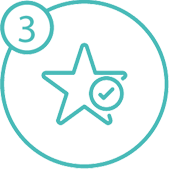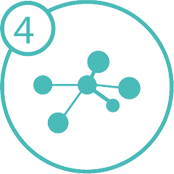Depression and Anxiety Disorder
Depression affects more than 300 million people globally. Untreated depression can lead to suicide, the second cause of death in people between 15 and 29 years of age.
Chronic stress and trauma in the first years of life have been associated with vulnerability to depression. A complex interaction between the genetic and environmental factors is involved in the pathophysiology of the disease.
Among the obstacles that prevent efficient care are the following:
Lack of resources and trained health staff
Stigmatization of mental disorders
Inaccurate or erroneous clinical assessment
In countries with different income levels, the people with depression are frequently given an incorrect diagnosis, while others who are not afflicted by this condition are often diagnosed erroneously and treated with anti-depressants.
Better understanding and knowledge of the disease is required because more than half of those affected worldwide do not receive an efficacious treatment.
Several brain regions are involved in the depression etiology, including the hippocampus, the amygdala, the nucleus accumbens, the nucleus striatum, the insula, the medial thalamus, and regions of the frontal cortex.
The hippocampus and prefrontal cortex formation have a two-way interaction to regulate several cognitive functions and process the emotional information. There is a strong neural synchrony between both regions during behavior and their functional interaction is regulated by oscillations. The neural group made up by the hippocampus cells and the prefrontal cortex influence each other like a circuit in the modulation of emotional and cognitive processes.
The hippocampus plays a key role in the stress-induced deregulation of the hypothalamus-pituitary-adrenal axis.
The imaging studies in patients with depression have shown a reduction in the hippocampus volume and it represents the most frequent disorder in the brain structures in depression. Minor but consistent reductions have been reported as well in the frontopolar cortex.
The high corticosterone levels that result from the deregulation of the hypothalamus-pituitary-adrenal axis are considered to be contributing factors in the hippocampus reduction seen in patients with major depressive disorder.
The neurophysiological studies, especially during the event-associated potentials, show a severe voltage or power reduction in frontopolar and temporal regions during tasks that involve attention, verbal memory, and emotional process. This voltage deficit is related directly to hypoactivity of the dopaminergic circuit in charge of activating the memory, attention, and motivation circuits.
For the above reasons, the depression approach must be focused first on detecting the disorders of circuits and regions mentioned and on differentiating other depression types, like those seen in bipolar disorder and schizophrenia, which result from other causes.
The patients with major depressive disorder frequently show cognitive deficiencies, like difficulties in attention, information processing, work memory, and executive function. It is worth stressing that all of these traits are not present in all the depressed patients, because some abnormalities have been reported in certain specific subgroups.
However, before the persistence of these deficiencies despite their mood improvement requires further efforts to understand the interrelationship between the cognitive dysfunction and depression and to prescribe treatments targeted specifically to this aspect of the disease.
REFERENCES
- Bradley M.M. Natural selective attention: orienting and emotion. Psychophysiology. 2009;46(1):1–11.
- Bradley M.M., Lang P.J. Measuring emotion: the self-assessment manikin and the semantic differential. J. Behav. Ther. Exp. Psychiatry. 1994;25(1):49–59.
- Bradley M.M., Lang P.J. The International Affective Picture System (IAPS) in the study of emotion and attention. In: Coan J.A., Allen J.J.B., editors. Handbook of Emotion Elicitation and Assessment. Oxford University Press; New York: 2007. pp. 29–46.
- Bradley M.M., Sabatinelli D., Lang P.J., Fitzsimmons J.R., King W., Desai P. Activation of the visual cortex in motivated attention. Behav. Neurosci. 2003;117(2):369–380.
- Bradley M.M., Hamby S., Löw A., Lang P.J. Brain potentials in perception: picture complexity and emotional arousal. Psychophysiology. 2007;44(3):364–373.
- Bruder G.E. Frontal and parietotemporal asymmetries in depressive disorders: behavioral, electrophysiologic and neuroimaging findings. In: Hugdahl K., Davidson R.J., editors. The Asymmetrical Brain. MIT Press; Cambridge, MA: 2003. pp. 719–742.
- Bruder G.E. Electrocortical responses to rewards and emotional stimuli as biomarkers of risk for depressive disorders. Am. J. Psychiatry. 2016;173(12):1163–1164.
- Bruder G.E., Fong R., Tenke C.E., Leite P., Towey J.P., Stewart J.E., McGrath P.J., Quitkin F.M. Regional brain asymmetries in major depression with or without an anxiety disorder: a quantitative electroencephalographic study. Biol. Psychiatry. 1997;41(9):939–948.
- Bruder G.E., Kayser J., Tenke C.E., Leite P., Schneier F.R., Stewart J.W., Quitkin F.M. Cognitive ERPs in depressive and anxiety disorders during tonal and phonetic oddball tasks. Clin. Electroencephalogr. 2002;33(3):119–124.
- Bruder G.E., Tenke C.E., Warner V., Nomura Y., Grillon C., Hille J., Leite P., Weissman M.M. Electroencephalographic measures of regional hemispheric activity in offspring at risk for depressive disorders. Biol. Psychiatry. 2005;57(4):328–335.
- Bruder G.E., Tenke C.E., Warner V., Weissman M.M. Grandchildren at high and low risk for depression differ in EEG measures of regional brain asymmetry. Biol. Psychiatry. 2007;62(11):1317–1323.
- Colgin LL. Oscillations and hippocampal-prefrontal synchrony. Curr Opin Neurobiol. 2011;21(3):467–474.
- Croxson PL, Johansen-Berg H, Behrens TE, et al. Quantitative investigation of connections of the prefrontal cortex in the human and macaque using probabilistic diffusion tractography. J Neurosci. 2005;25(39):8854–8866.
- Ferrari AJ, Charlson FJ, Norman RE, et al. Burden of depressive disorders by country, sex, age, and year: findings from the global burden of disease study 2010. PLoS Med. 2013;10(11):e1001547.
- Godsil BP, Kiss JP, Spedding M, Jay TM. The hippocampal-prefrontal pathway: the weak link in psychiatric disorders? Eur Neuropsychopharmacol. 2013;23(10):1165–1181.
- Gordon JA. Oscillations and hippocampal-prefrontal synchrony. Curr Opin Neurobiol. 2011;21(3):486–491.
- Hoover WB, Vertes RP. Anatomical analysis of afferent projections to the medial prefrontal cortex in the rat. Brain Struct Funct. 2007;212(2):149–179.
- Jay TM, Glowinski J, Thierry AM. Selectivity of the hippocampal projection to the prelimbic area of the prefrontal cortex in the rat. Brain Res. 1989;505(2):337–340.
- Maren S. Seeking a spotless mind: extinction, deconsolidation, and erasure of fear memory. Neuron. 2011;70(5):830–845.
- Preston AR, Eichenbaum H. Interplay of hippocampus and prefrontal cortex in memory. Curr Biol. 2013;23(17):R764–R773.
- Russo SJ, Nestler EJ. The brain reward circuitry in mood disorders. Nat Rev Neurosci. 2013;14(9):609–625.
- Thierry AM, Gioanni Y, Dégénétais E, Glowinski J. Hippocampo-prefrontal cortex pathway: anatomical and electrophysiological characteristics. Hippocampus. 2000;10(4):411–419.
- Varela C, Kumar S, Yang JY, Wilson MA. Anatomical substrates for direct interactions between hippocampus, medial prefrontal cortex, and the thalamic nucleus reuniens. Brain Struct Funct. 2014;219(3):911–929.
- Wolff M, Alcaraz F, Marchand AR, Coutureau E. Functional heterogeneity of the limbic thalamus: from hippocampal to cortical functions. Neurosci Biobehav Rev. 2015;54:120–130.
- World Health Organization."Depresión." Organización Mundial De La Salud.
- Zhong YM, Yukie M, Rockland KS. Distinctive morphology of hippocampal CA1 terminations in orbital and medial frontal cortex in macaque monkeys. Exp Brain Res. 2006;169(4):549–553.

 English
English  日本語 (Japan)
日本語 (Japan)  Español
Español 




